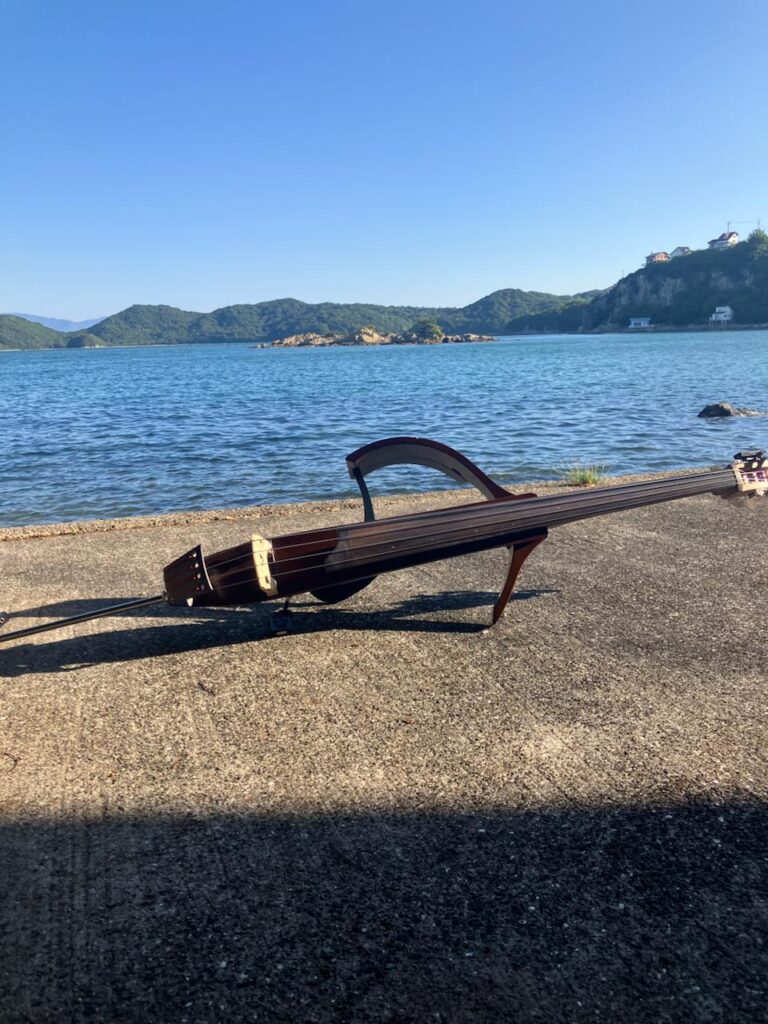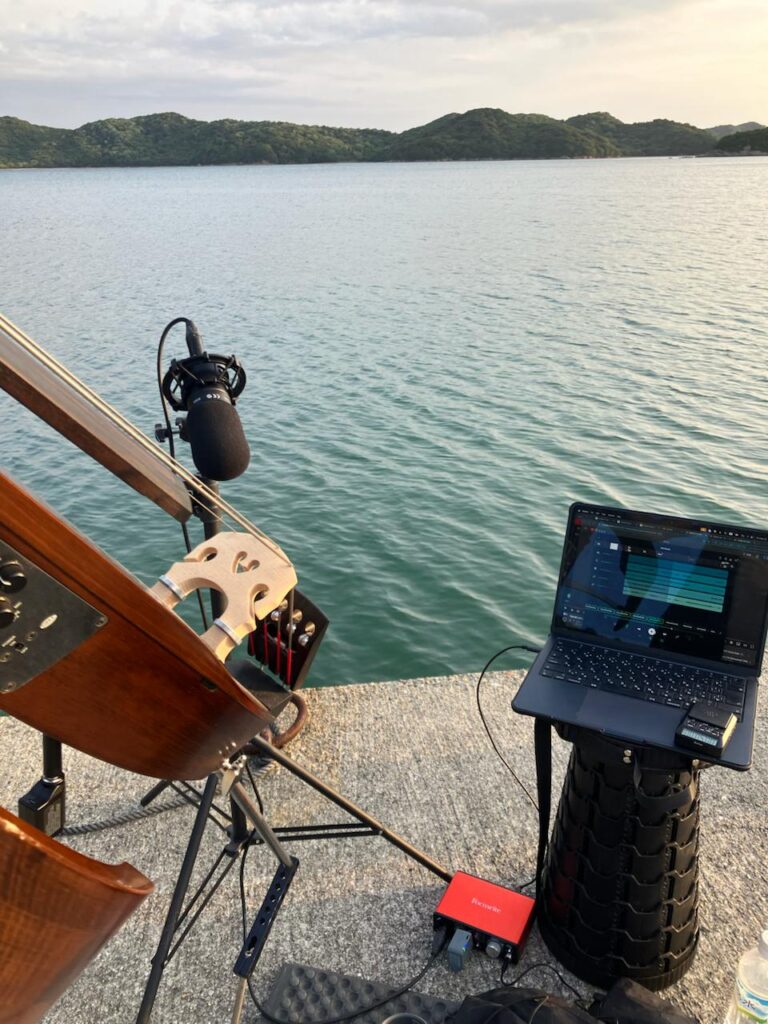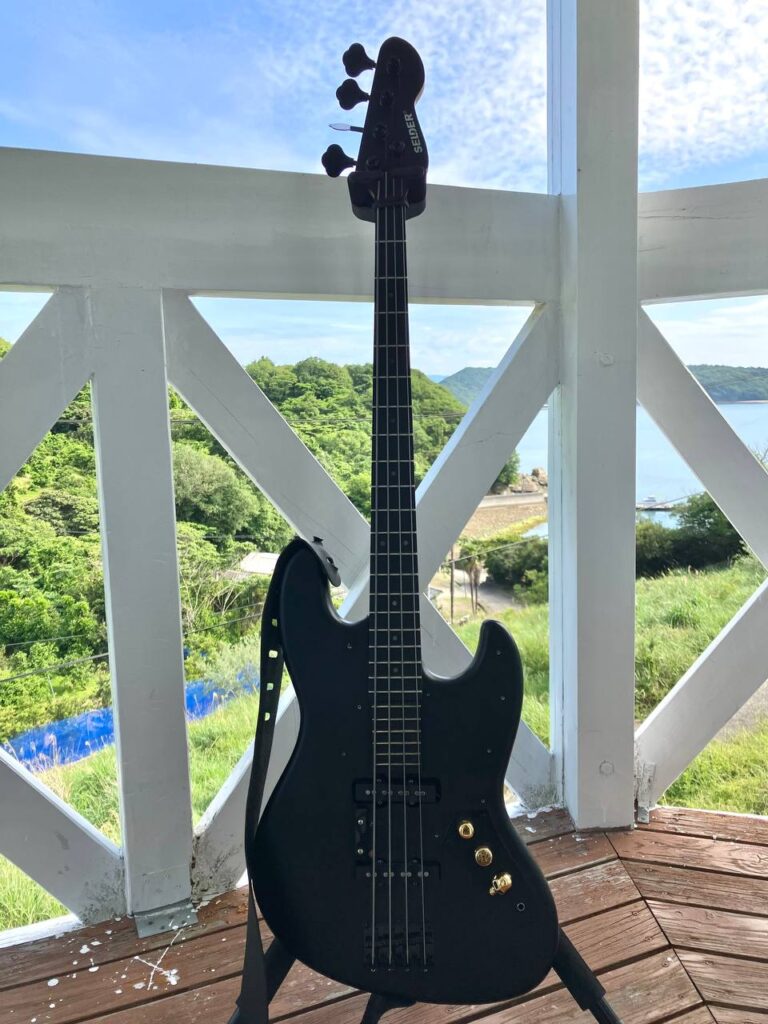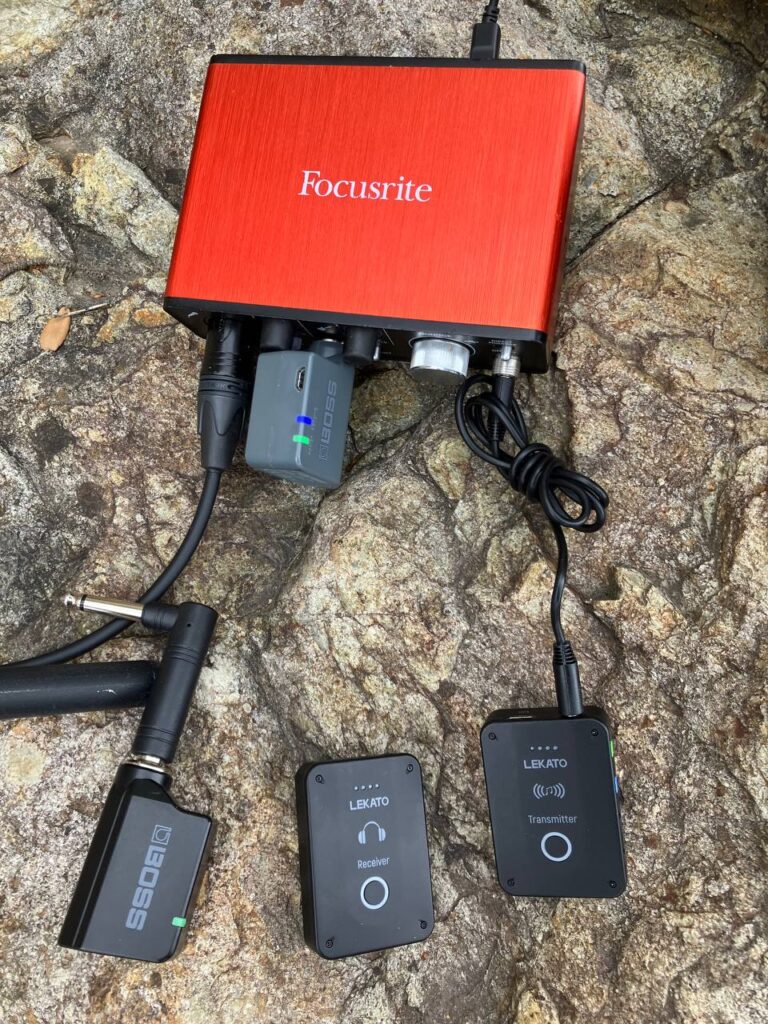-97-

I honestly don’t remember much about what I did in May. It might be because I’ve grown so used to the slow pace of life on the island that my sense of time no longer connects clearly with specific events. What I do notice is a change in how I practice. Instead of trying to cram as much as I can into a limited time, I’ve started picking up my instrument and simply playing. When a challenge comes up, I deal with it then. I’m not sure if this is a better approach, or if I’ve just gotten tired of writing down my practice methods in a notebook. But I do feel that my approach has become more flexible, and I’m more willing to follow spontaneous interests. I’ve realized that it’s better to work on something while I’m still curious about it. Sometimes, I think about transcribing a solo from a tune, but two or three days later the motivation fades. By not locking myself into a strict routine, I can dive into whatever catches my attention. That feels like a real advantage. On the other hand, practicing for long stretches without any structure might not be ideal. Still, I have a sense that spending relaxed, extended time with my instrument is something I instinctively know I need, and I’ve been following that.
My daily life in May was quite unusual. I usually woke up around 10 in the morning. If the weather was good, I would walk to the beach with my silent bass and a cup of coffee to practice. Around noon, I would take care of tasks the cottage owner had asked me to do. Once I finished, I often returned to the beach to practice again. Since I had become mostly nocturnal, I often practiced at night under the stars and in complete darkness. In the dark, I couldn’t rely on visual cues from the fingerboard, which actually made it great training for my left-hand technique. Most of my focus was on improving my right-hand three-finger technique, though I still haven’t fully mastered it. It takes a huge amount of time, and I sometimes wonder if switching from two fingers to three is worth the effort. Since I haven’t completely internalized the technique, I’m not yet in a position to explain its full advantages. One improvement is that I no longer skip the middle finger when shifting across strings. However, when I try to add syncopation or accents using the index finger, my brain often senses an awkward motion and defaults to using the ring finger instead. Three-finger technique is difficult. It is not some kind of advanced science; the basic idea is very simple: play with the ring finger, then middle, then index, and loop back to the ring. But once you try adding accents or phrases that leap across multiple strings, the difficulty increases. Still, I believe time will eventually take care of this, so I remain optimistic.

I began taking the double bass seriously in January 2024. I started learning a system with four fingers on the left hand and three fingers on the right. Back then, I had to dedicate all of my time to the double bass, because even producing a sound by plucking the strings was difficult. There was simply too much to take in. Only recently have I started to feel a little more at ease, and I’ve begun picking up the electric bass again. I don’t start my practice sessions with the electric bass, but it’s become common for me to switch to it after about an hour of double bass practice when I start to feel tired. Most of my right-hand three-finger training has been on the double bass, but when I play pizzicato on the electric bass, it feels noticeably smoother. Compared to the double bass, the difficulty of using three fingers seems a bit lower on electric.
Music I listened to in May (Coltrane, Pharoah Sanders)
Unlike last year, this year I haven’t been focusing solely on Michael Brecker. Instead, I’ve been listening more to Bird, Coltrane, and Miles, trying to see what I can learn from these great musicians. I think this shift was influenced by an interview I saw with Branford Marsalis. In the video, Branford talks about how, while he was practicing with tapes of Coltrane’s solos, Art Blakey walked in and asked him, “Do you think Coltrane practiced using tapes of his own future solos?” This question led Branford to reflect on the importance of studying the musicians that his heroes had followed. That idea stuck with me. If I want to understand the essence of someone’s sound, I have to explore what inspired them. Simply copying Michael Brecker isn’t enough to bring me closer to his sound. That’s why I’ve been listening more intentionally to Coltrane, as well as to Bird, Sonny Rollins, and Joe Henderson.
Since April, I’ve been captivated by Coltrane’s solos on standards that don’t have complex chord progressions. Last month I transcribed Like Sonny, and this month I’ve been working on Speak Low, a recording where Coltrane plays alongside Sonny Clark. What drew me to his solo on Speak Low was the way he delivers fast, ascending and descending scale lines with such energy. Compared to his solo on 26-2, the drive in Speak Low feels even more powerful. Still, the artist I listened to the most in May might have been Pharoah Sanders. His phrases aren’t especially technical, yet they strike something deep in the heart. His solos sound emotional, soulful, and spiritual. The more I listen, the more I feel that his music comes from a mysterious place, perhaps from what Descartes described as the “mind” in the mind-body dualism. It wouldn’t be strange to say that Pharoah’s sound arises from that inner dimension. Thinking this way, it starts to feel natural that every cell in a musician’s body might be involved in the act of musical expression. Pat Metheny talks about something similar in a video I recently watched. The deeper I dive into Pharoah’s sound, the more I begin to question whether playing notes alone truly defines music. Philosophy, one’s upbringing, and past experiences all seem to shape the way improvisation takes form.
Music is not a language; rather, language itself is music
I watched a video featuring Dr. Molly Gebrian, a neuroscientist and violinist, where she talked about effective ways to practice. Although this was not the main focus of the video, she made an intriguing point that language itself is music. She proposed the idea that, as infants grow, they do not make a clear distinction between language and music when they absorb sound as statistical information. This idea, that language is essentially music, has recently begun to fascinate me.
Music theory, like grammar in language, is governed by certain rules. For example, Coltrane’s solos sound like conversations to me, which makes this comparison feel quite natural. However, I had not paid much attention to the idea of treating language itself as pure sound. Thinking about it this way, language as music contains both beautiful and unpleasant expressions, just like music itself. My brain tends to focus unconsciously on the way people speak. I find myself noticing how someone prompts a response from the listener, where they pause or break their sentences, how they balance logos, ethos, and pathos, and how much hidden structure or information flow is embedded in their speech. Political speeches, for instance, often rely heavily on transitions, ethos, and pathos. The sentences are kept short and punchy. Music shaped by authoritarian tones tends to have low information density. On the other hand, the kind of music one hears from philosophers like Noam Chomsky feels more refined and beautiful. Their speech is grounded in logos, analogies, and metaphors. Since I mentioned Descartes in the previous paragraph, I am reminded that rhetoric, as Descartes described it, also exists in music. It is the study of how certain musical patterns evoke specific emotions in the listener.
Gear-related: Wireless system and SELDER bass
Ever since I found out that Amazon delivers to Kojima, I’ve become quite dependent on online shopping. In May, I made two major purchases. The first was a SELDER bass, which cost around 20,000 yen on Amazon. I never imagined I would buy an electric bass while living on Kojima, but the trigger was finding a cheap bass called Legend at a multi-purpose facility called Arcadia Village on the mainland, a bit away from the island. The Legend bass had a surprisingly clear high end, and it made me wonder if this bright tone is a common trait among budget basses. Out of curiosity, I decided to buy a similarly priced SELDER bass. After switching the strings to stainless steel, the tone became even more treble-focused. Since I now had the SELDER, I decided to sell my 120,000 yen Yamaha TRB1004J.
There were a few things I was dissatisfied with on the TRB. First, the cable jack was not located on the face of the body near the pickups like a Fender, but on the side near the end of the instrument. This design made it uncomfortable to play while sitting on a sofa, since the cable would get in the way, even with an angled plug. That always felt inconvenient. Second, being an active bass, it required a battery, and replacing it was a bit of a hassle, even though the battery life itself was good. I also realized that the long scale didn’t suit me. At first, I thought a long scale was necessary to get that signature TRB sound, but I usually play bass guitar only when I’m taking a break from the double bass. In that context, the TRB didn’t feel like an instrument I could casually pick up. I imagined it would take considerable time just to get used to shifting positions with my left hand.

On the other hand, what I appreciated about the TRB was its brilliant, sparkling tone and the fact that, despite being a four-string bass, it had 24 frets, making access to the higher register easy. Compared to cheaper basses, the TRB was clearly well-made, from the wood selection to the finish, and its overall construction felt solid. As a musical instrument, it was highly refined. Still, for me, sound matters more than build quality. Also, when an instrument feels expensive, I tend to get nervous about handling it, especially when taking it outside. That’s another reason it didn’t feel so convenient.
Before I bought the SELDER, I had actually considered extending the fingerboard myself to reach higher notes. On the double bass, I often press as high as high B♭, and even with the YAMAHA TRB, I felt the fingerboard needed to be extended to reach that note. When I was in Chiba, I contacted a guitar workshop in the Kanto area and found out that the cost for such a modification would be over 30,000 yen. Since the fingerboard extension on my double bass only cost 40,000 yen, I couldn’t justify spending that much on a bolt-on bass guitar fingerboard that doesn’t even have a fingerboard radius. As an alternative, I thought it would be better to try a DIY extension on a cheap bass. That way, even if the modification failed, I would not suffer much of a mental blow. I’ll go into detail about the modification in a separate blog, since it would make this post too long. As for the SELDER neck, when I first touched it, I felt that the fingerboard was simply glued onto a flat neck, and the shape didn’t really suit my taste. So I didn’t just extend the fingerboard, I also carefully filed down the sides of the neck by hand. I was a little concerned that sanding too much might affect the strength of the neck, but since it’s a budget instrument, I decided not to worry about it too much.
I am not entirely sure why I find myself returning to Fender-style basses. In the end, what matters is how the instrument feels when I play it and what my intuition tells me. Maybe I chose the Fender type simply because it feels familiar. For now, I have no complaints about the SELDER.
I also introduced a LEKATO wireless system into my setup. I had been finding it a bit of a hassle to connect headphones or earphones to the audio interface with a cable just for monitoring during recording. So I began thinking about whether I could go completely wireless for both the bass input and monitoring by combining the LEKATO system with the BOSS WL-20.

Cables often got tangled or caught underfoot, and I started to feel they were a source of accidents. That led me to aim for a fully wireless setup, both for recording and practice. In the end, I found that the BOSS WL-20 occasionally interferes during recording, so I still need to use a regular instrument cable in those situations. However, for practice, the wireless system works just fine. Signal dropouts are extremely rare. It has made things much more convenient, especially when I want to walk over to the kitchen to get some water while practicing. I no longer need to take off my earphones just for that.
If there is one drawback, it would be the battery life. After about four to five hours of use, the system needs to be recharged. Since I often like to leave my earphones in throughout the day to listen to ambient sounds such as birdsong or the wind captured with a condenser mic, this limitation makes it a bit less convenient for continuous use.